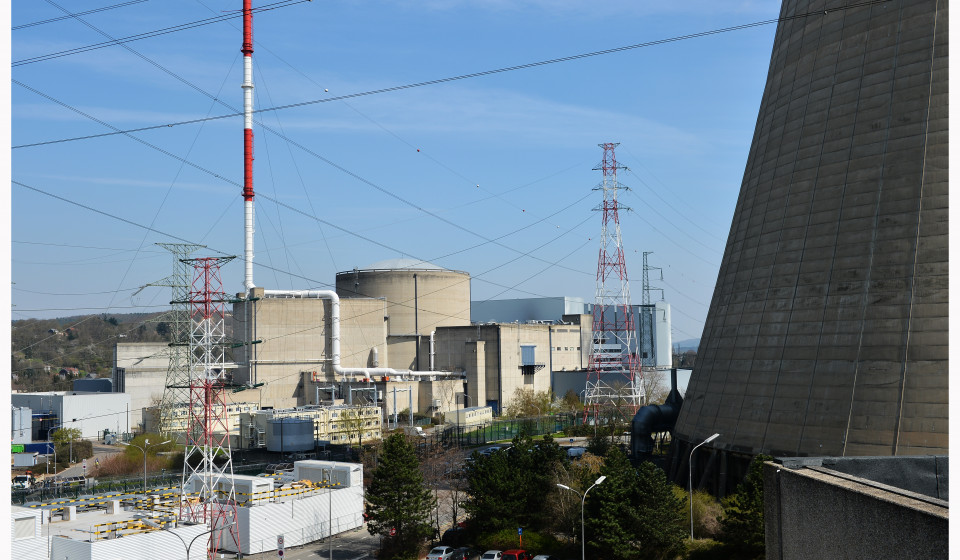Shutdown of Doel 3 and Tihange 2
How it started
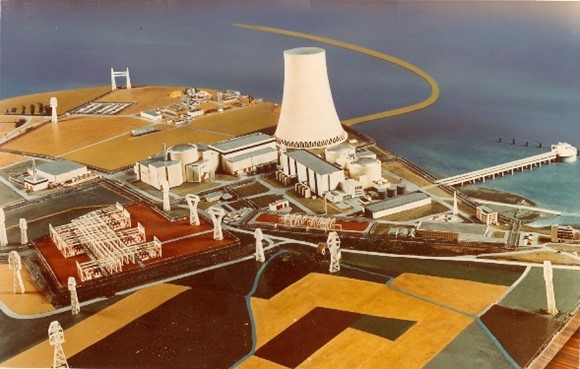 On 1 January 1 1975, construction of the third unit of the new nuclear power plant started on the site of energy company Ebes in the polder village of Doel, on the banks of the Scheldt. In Huy in the province of Liège, a similar new unit is being built in the same period on the Intercom site, on the right bank of the Meuse: Tihange 2. A consortium of French nuclear power plant construction company (Framatome), electromechanics manufacturer ACEC from Charleroi and Liege-based steelmaker Cockerill built the plants based on a design by the US company Westinghouse. Both plants are pressurised water reactors (or PWR) with 3 primary cooling water circuits and a net electrical capacity of 900 MW. The steam turbines are supplied by Franco-American company Alsthom Atlantique.
On 1 January 1 1975, construction of the third unit of the new nuclear power plant started on the site of energy company Ebes in the polder village of Doel, on the banks of the Scheldt. In Huy in the province of Liège, a similar new unit is being built in the same period on the Intercom site, on the right bank of the Meuse: Tihange 2. A consortium of French nuclear power plant construction company (Framatome), electromechanics manufacturer ACEC from Charleroi and Liege-based steelmaker Cockerill built the plants based on a design by the US company Westinghouse. Both plants are pressurised water reactors (or PWR) with 3 primary cooling water circuits and a net electrical capacity of 900 MW. The steam turbines are supplied by Franco-American company Alsthom Atlantique.
Milestones
- 14 June 1982: Reactor doel 3 reaches criticality for the first time.
- 23 June 1982: Doel 3 is connected to the grid for the first time.
- 1 October 1982: Official commissioning of Doel 3.
- 5 October 1982: First nuclear chain reaction in the Tihange 2 reactor.
- 13 October 1982: Tihange 2 is connected to the grid for the first time.
- 1 February 1983: Official commissioning of Tihange 2.
- 1993: Replacement of the steam generators at Doel 3.
- 2001: Replacement of the three steam generators of Tihange 2 in 62 days, a world record at the time.
- 2010: With an annual production of 8824 GWh, Tihange 2 breaks the Belgian record. This record was broken again the following year by Tihange 3.
- 4 July 2012: Start of the analysis of hydrogen flakes in Doel 3's reactor vessel.
- 2 October 2012: Postponement of the restart of Tihange 2 after the detection of hydrogen containment systems in the reactor vessel wall.
- 17 November 2015: FANC approved the start-up of Doel 3 and Tihange 2.
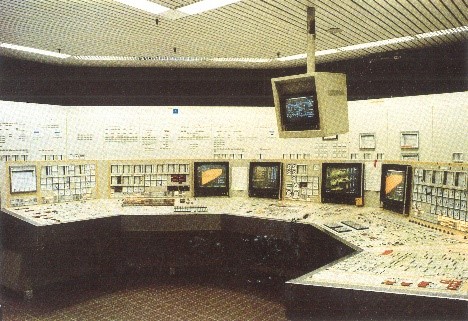 |
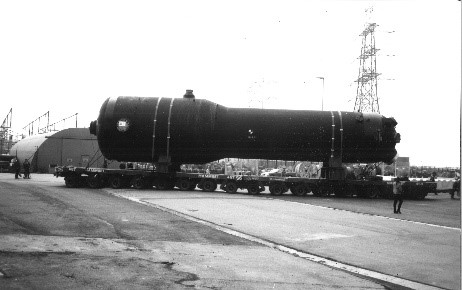 |
40 years of Doel 3 in numbers
1006 megawatts of power
11 924 days operational
More than 270 000 000 000 kilowatt hours of electricity produced
40 years of Tihange 2 in numbers
1008 megawatts of power
11 963 days operational
More than 270 000 000 000 kilowatt hours of electricity produced
The life cycle of Doel 3 and Tihange 2
The life cycle of a nuclear power plant ranges from the groundbreaking ceremony to the time the site is released for other activities. For Doel 3 and Tihange 2, this period spans more than 60 years.
Doel 3:

Tihange 2:

With the final shutdown of Doel 3 and Tihange 2, a new phase in the life cycle of these nuclear power plants begins: the Post Operational Phase. This phase is a necessary part of the decommissioning process. It begins when the reactor is permanently shut down and ends when all fuel elements and radioactive materials have been removed from the installations. The purpose of the Post Operational Phase is to prepare the installations for decommissioning.
In concrete terms, the Post Operational Phase includes the unloading of the reactor and the transfer of the fuel to the deactivation pools. It also includes the decontamination of the primary circuit and the transfer of the fuel to temporary storage buildings. The disposal of the filters and resins, the final flushing of the pipes and docks, and the disposal of waste, effluents and hazardous products also take place in this phase.
After that, Electrabel will proceed with the actual dismantling of the nuclear power plant. During dismantling, the focus will be on the "big four": dismantling the reactor and its internal components, the protective concrete structure around the reactor vessel, and the primary circuit including the steam generators. This also involves the removal of all pipes, cables and other equipment and the construction of the necessary infrastructure to handle the dismantling material and waste.
Only when Electrabel has removed all traces of radioactivity from the facilities will the final phase start, where all remaining structures will be completely demolished.
The post-operational phase
In the evening of Friday, 23 September 2022, at 21h31, operators in the Doel 3 control room shut down the reactor for the last time and disconnected it from the high-voltage grid. On January 31, 2023, at 22h45, the same thing happened at Tihange 2.
At the start of a new fuel cycle, core's reactivity is high. To maintain a balanced nuclear reaction, some of the neutrons released as part of the nuclear reaction have been absorbed. This absorption is achieved by adding boric acid to the cooling water and by fully lowering the control rods into the core.
As the fuel cycle progresses, reactivity levels go down. The boric acid concentrations in the primary water are gradually lowered and the control rods are increasingly lifted out of the core to maintain a balanced nuclear reaction.

At the end of the fuel cycle, the boric acid concentration reaches zero and the control rods have been fully lifted. At that time, the cooling water temperature is lowered to maintain reactivity at a level sufficient to keep the nuclear chain reaction going. This causes a drop in power output. The plant is currently operating in stretch-out mode.
In the following weeks, employees will perform the activities they have been doing for years, during the annual maintenance outages. A few days after the reactor has been shut down, they will disconnect all cables from the reactor, unscrew the bolts of the reactor lid and open the reactor. They will fill the reactor basin with water – which is very effective in blocking radiation from the reactor core – and will remove the upper internal parts of the reactor. Then, piece by piece, they will lift the 157 fuel elements of about four meters long from the reactor and place them on the transport system which will transfer the elements to the cooling basins, located in a bunker adjacent to the reactor building. The entire transfer process takes place underwater.
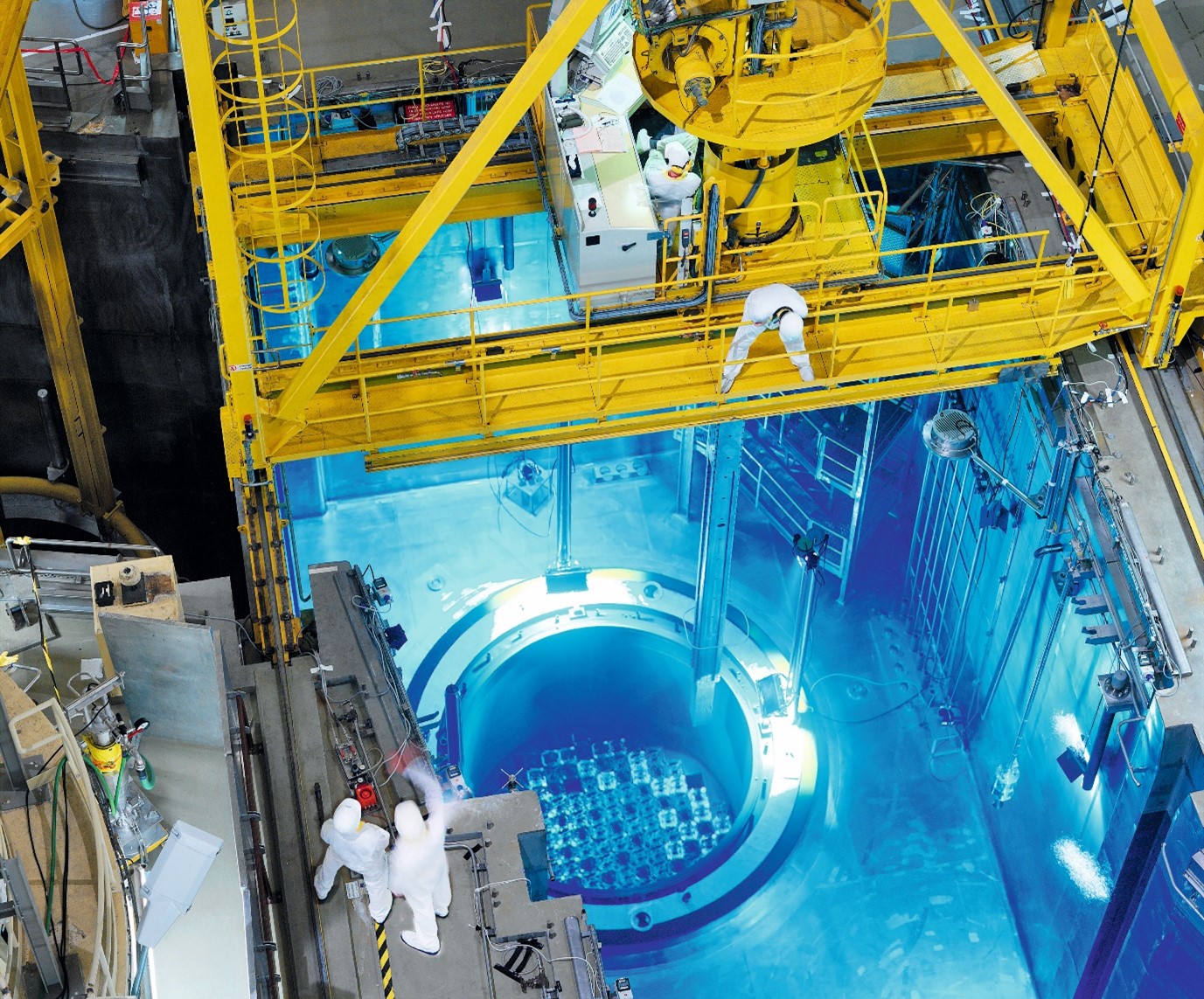
Take a look inside the power plant during an outage of Doel 4
Take a look inside the power plant during an outage of Tihange 2
In the next phase, staff will start the chemical decontamination of the primary circuit. The primary circuit includes the reactor, primary pumps, primary cooling water lines and pressure control vessel.
Activities at the cooling basins will also start in 2023. The fuel elements from previous reactor fuel cycles – which have already had several years to cool down – will be transferred underwater to special storage and transport containers. The full containers are hoisted from the water, dried, hermetically sealed and transferred to a building for temporarily storing spent fuel on the site of the nuclear power plant.
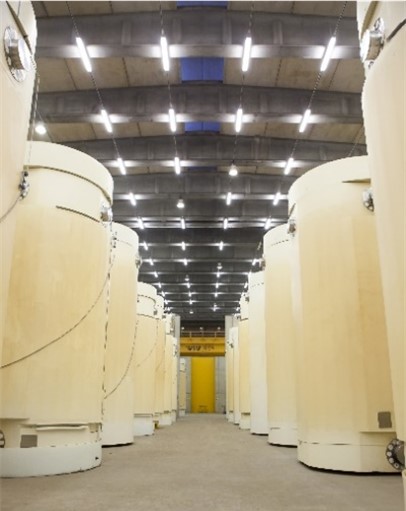 |
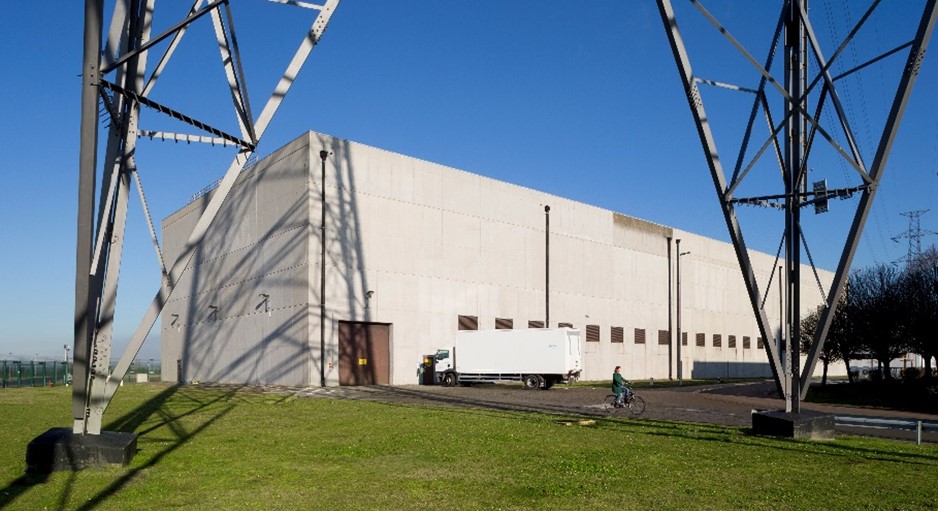 |
More information on the fuel containers and temporary storage buildings
The post operational phase includes more than just this, obviously. As long as nuclear fuel is still present in the cooling basins, certain systems have to remain operational on standby to ensure the cooling of the nuclear fuel under all conditions: piloting, measurement and control systems, electrical boards and switches, emergency generators, fire-fighting systems, ventilation systems, pumps, piping and storage tanks for cooling water and other liquids, filtration systems, etc. Some of the staff will therefore still be engaged in monitoring, testing and maintaining all these systems.
In the course of the post operational phase, the nuclear risk will be reduced by the further cooling of the fuel and so fewer and fewer safety systems will be needed. Systems that are no longer needed will be taken out of service according to a careful schedule.
In 2027, when the cooling basins will be completely empty and all nuclear fuel containers have found a place in the temporary storage buildings, staff will proceed to decontaminate the cooling basins and associated cooling systems. After this phase, most of the radioactivity will have been removed from Doel 3's facilities. The final waste waters and hazardous materials will still need to be removed. Everything is then ready for the complete dismantling of the plant.
Finally, the preparation for the dismantling of Doel 3 and Tihange 2 will also require the construction of new infrastructure for the dismantling activities: waste storage areas, installations for the treatment of waste and large components, installations for clearance measurements, etc.
Dismantling phase
As soon as the post operational phase activities have sufficiently advanced and the licence allows for this, Electrabel will start dismantling the plants. According to the current schedule, this will already start in 2026. The duration of this phase will be largely determined by the dismantling activities in the reactor building. The remaining systems – such as the turbine hall, the buildings with the electrical and control systems, the second-level safety systems bunkers – will be dismantled in parallel.
Dismantling the reactor building will start with cutting up and removing the reactor's internal parts. Examples include the grids that hold the fuel elements in place, the base plate on which the reactor system rests and the control rod control systems. These steel components have become radioactive due to decades of exposure to radiation from the reactor core. They will be cut underwater, using remotely operated robots. The cut parts will then be stored in containers specially designed for this purpose.
After the internal parts, the reactor vessel itself will also be dismantled. Special saws will cut the 20-cm-thick steel walls of the vessel into smaller pieces, which, like the internal parts of the reactor, will be stored in containers.
The next step is to dismantle the primary circuit. Steel pipes of the primary cooling circuit will be cut using tungsten or diamond saws and will be detached from the major components, such as the steam generators and pressure control vessel. These parts will be removed in their entirety and transferred to an on-site location where they will be dismantled. Since these elements are considerably less radioactive, they do not need to be cut under water, although remotely operated machines will sometimes be used.
Once the reactor vessel has been completely removed, staff can get to work on the biological shield, a thick 2.65-m-thick concrete wall surrounding the reactor vessel. Decades of exposure to high levels of radiation means the inside of this concrete ring around the reactor has become radioactive. The radioactive concrete layer will be carefully cut away from the rest, treated and transferred to Belgoprocess as radioactive waste.
After the biological shield is removed, workers will check all remaining concrete structures in the reactor building. Using special measuring equipment, they will check every inch for the possible presence of radioactivity. Where necessary, they will scrape surfaces to remove all radioactive particles. Once these works are completed, the reactor building will be ready for conventional demolition.
Final phase
At the end of the dismantling phase, all parts of the nuclear power plant will be completely free of radioactivity or hazardous substances. The remaining structures and buildings will be completely demolished using conventional demolition methods. Once all units are demolished, the site will be prepared for new industrial activities.
An important sidenote, however, is that there will still be nuclear fuel present at both sites at that time, in the temporary storage buildings mentioned earlier. The security perimeter around these storage buildings will possibly be smaller than the current site, but their presence does mean that certain – mainly security-related – restrictions will apply to the rezoning of the site.
